Dungeons: the Dragoning 40k 7th Edition by Loki_XLII
Introduction
Original SA post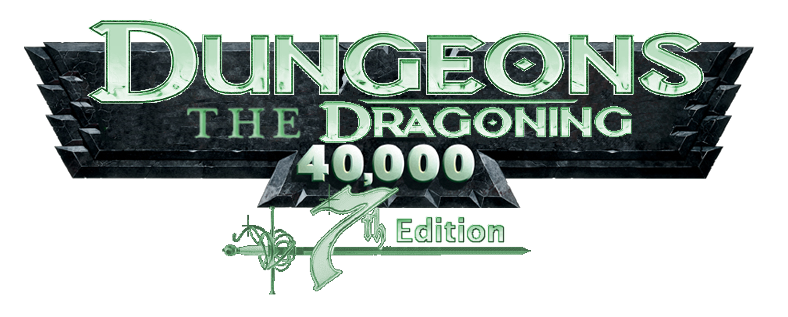
Dungeons: the Dragoning 40k 7th Edition Part 1: Introduction
A couple of years ago on April Fools, a game was posted to /tg/. Some people decided to download it, and when they did, they got this:
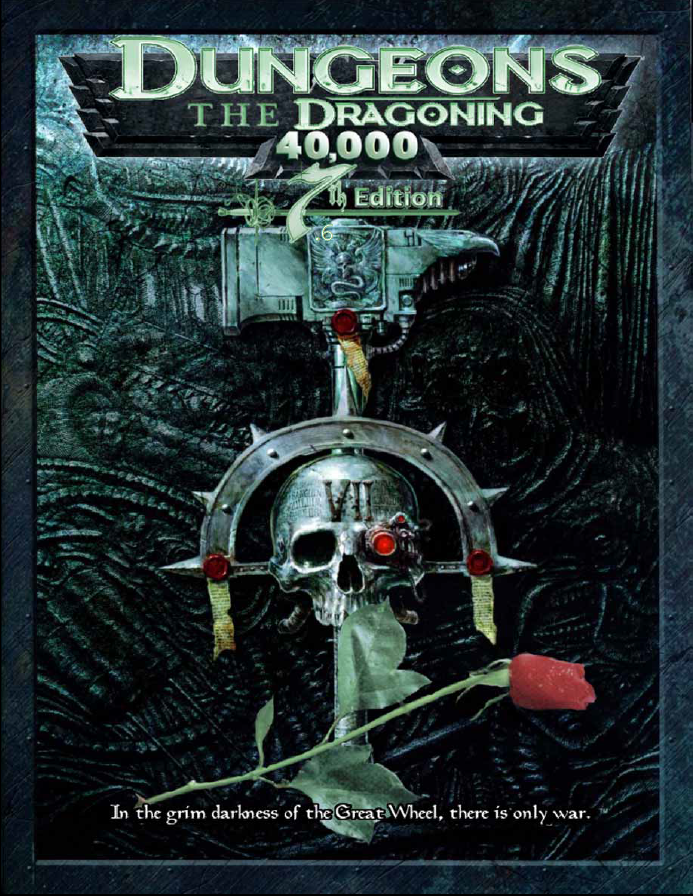
People glanced at it a little bit, and had a bit of a laugh. The basic premise is just taking a bunch of other roleplaying games, or any random bit of pop culture, and sticking it onto the definitive kitchen sink setting. Specifically, the game is Planescape mixed with Warhammer 40k and Spelljammer, with a good deal of nods to WoD, Exalted, and 7th Sea. People respected the parody, but some just laughed at it a bit and moved on. As it started getting tossed around the internet some more, and people actually started reading its mechanics, they realized something more: it was actually really awesome.
With that bit of background out of the way, lets talk about the game and this review. The game is free, if these reviews intrigue you, you can download the latest version off of the designer, Lawful Nice's blog, found here . You can also download book 2, which I'll probably be reviewing after I'm done with this one. The review itself will probably be a little low on images, as many of the art in the book is stolen, which I guess is bad, but this is not a game about being original. On the game itself, it's basically about taking every rpg known to man and throwing their settings and mechanics into a blender and actually getting something that's somehow usable after all of that. It's pretty funny, and is good for making badass characters.
Moving into the actual book, it begins by covering all of its bases by claiming it as a work of parody, and claiming copyright for anything that's actually original. It also thanks some people, and reminds everyone to have fun, and not take roleplaying too seriously. After that, it has a table of contents, and then we're into the book proper!
The book takes a page to explain some basic assumptions in a pretty
 way, saying that this is a game where it pays to be aggressive, and that characters are supposed to kick ass, and if that means sacrificing some originality, so be it. It also claims to be relatively simple, fast, and easy to learn, and we'll see if that's true a little later. Following that, and indeed between every chapter, we've got a page of flavor text, some of which are pretty funny. This one just explains some of the basics of the setting, explaining that the Lady of Pain is the master of the Portal Network and silently controls Sigil, despite the constant warring of mortals and gods. People from hundreds of Crystal Spheres come to Sigil all the time, to escape their fates or find their fortunes, only to find that the Warhammer elements mean that every place is as shitty as where they came from. Several factions are trying to overthrow the Lady of Pain, something called the Great Devourer is coming from the Far Realm and consuming all before it, Orks are being Orks, Eldarin are being vengeful prophets, and some kind of Ancient Evil from before creation is arising. So, fun times for all, I guess.
way, saying that this is a game where it pays to be aggressive, and that characters are supposed to kick ass, and if that means sacrificing some originality, so be it. It also claims to be relatively simple, fast, and easy to learn, and we'll see if that's true a little later. Following that, and indeed between every chapter, we've got a page of flavor text, some of which are pretty funny. This one just explains some of the basics of the setting, explaining that the Lady of Pain is the master of the Portal Network and silently controls Sigil, despite the constant warring of mortals and gods. People from hundreds of Crystal Spheres come to Sigil all the time, to escape their fates or find their fortunes, only to find that the Warhammer elements mean that every place is as shitty as where they came from. Several factions are trying to overthrow the Lady of Pain, something called the Great Devourer is coming from the Far Realm and consuming all before it, Orks are being Orks, Eldarin are being vengeful prophets, and some kind of Ancient Evil from before creation is arising. So, fun times for all, I guess.
Then, there's the actual introduction chapter, which is a grand total of two pages, so I'm going to rush through it and finish up Part one of this review. It's opens with this really amazing intro:
Dungeons the Dragoning posted:
Welcome friends. You hold in your hands a roleplaying game, one that asks you a very important question.Is a man not entitled to the grandest of adventure? 'No!' says the man with the neckbeard, 'it would be unbalanced.' 'No!' says the man in the high heels, 'it wouldn't be deep enough.' 'No!' says the man on the internet 'the new edition ruins everything forever.' I rejected those answers; instead, I chose something different. I chose the impossible. I chose... DUNGEONS THE DRAGONING, a game where the fighter would not fear the wizard, where the cleric would not be nerfed, where the great would not be constrained by the small! And with the roll of your dice, DUNGEONS THE DRAGONING can be your game as well.
And that's it for the introduction, hope you guys are enjoying this so far.
Next Time: The basics of Character Creation!
Character Creation
Original SA post Dungeons: the Dragoning 40k 7th edition: Part 2: Character CreationAlright, so next chapter coming up is Character Creation. This should be a short post, because a lot of it is rules, but we've also got a decent introduction to some of the core fluff. The chapter starts off with a passage explaining that your Hero is blessed with some kind of awesome power, a one in a million shot that marks you as one of the baddest motherfuckers in the Great Wheel right away. In a touch I kind of like, and something I'm pretty sure is based off of Exalted, it says that all Heroes have to be people with a destiny deserving of this power. You can't land upon this power and be lazy, that just doesn't happen. It's something that should probably be obvious in any roleplaying game, but I've seen people create some really unambitious characters, and I think this helps nail down the feel of the game.
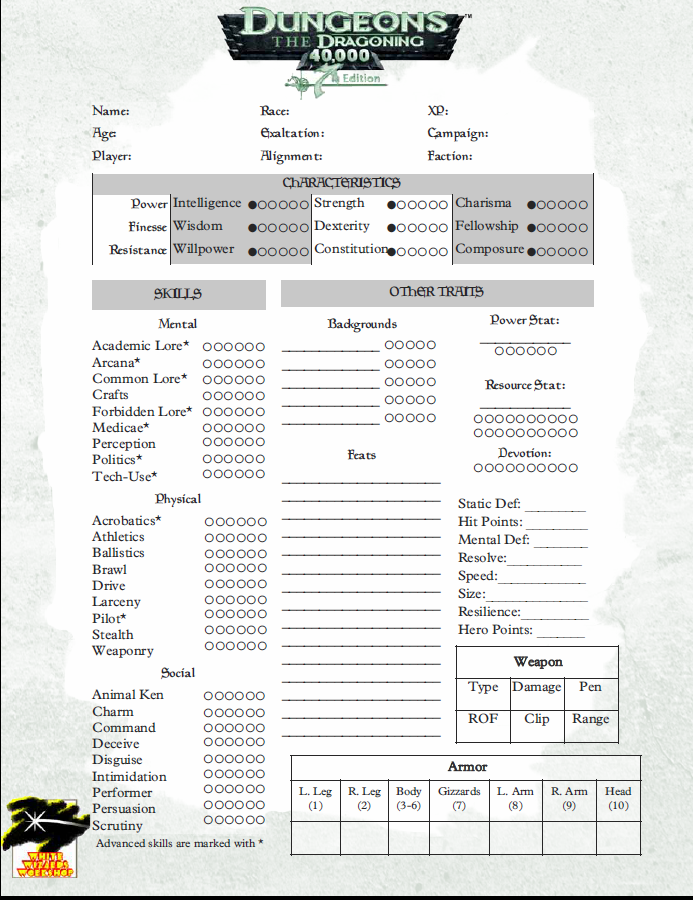
As you can see, that is the first page of the character sheet, and if you're familiar with the systems its aping, a lot of it should be pretty self-explanitory. Character creation is broken down into steps, which should be familiar to the vast majority of you.
Step Zero: Concept
Pretty basic, come up with a short idea of what you're going to build, talk to the SM, if he approves, you're good to go. Not even any cool examples. Oh well.
Step One: Starting Scores
Here we go into actual numbers and making choices. This step is assigning your characteristics, or ability scores, and skills, and fans of White Wolf's system should feel right at home. characteristics have three categories, Physical, Social, and Mental, with three characteristics in each category. Each of those characteristics has a label of Power, Finesse, or Resistance. Those categories don't seem to come into play much, but they do help to visualize the characteristic's role, and they aren't hurting anything. You choose one of the categories, either Physical, Social, or Mental to be you primary. The other two are assigned your secondary and tertiary slots. This determines how many dots you get to fill out on your character sheet, 6 for Primary, 4 for Secondary, and 2 for Tertiary. Each characteristic starts with the first dot filled, and can go up to six dots. However, starting characters are are limited to four dots in a characteristic, though racial choices can bump this up.
Skills work much the same way as characteristics, being split into the same categories with the same choice of primary, secondary, and tertiary. The main difference is that you get 8, 6, and 4 dots to spend on skills, they start at zero, and are capped at three for a starting character. There is also an alternative method of determining starting scores, where you get a huge chunk of experience and buy them point for point from that, but I've never seen anyone use it. I guess it's good if you want to minmax.
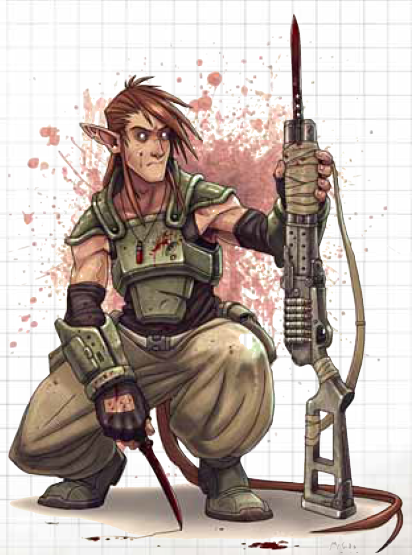
Since you all asked for the art, have this picture. A reverse image search reveals him to be protagonist of a comic by DeviantArt user McGibs.
Step Two: Choose your Race
Dungeons: the Dragoning has a pretty good selection of races, twelve in the first book, so most people won't be wanting for choices. The book makes a point of saying that any race can be good with any class and any Exaltation, but that some will be better than others at certain tasks, and you'll have to build for the more exotic combinations. Every race gets a bonus to a characteristic and some skills, along with a minor ability. Presented below is some brief descriptions of them. The fluff is pretty vague in this section, it's fully expanded upon in the upcoming Race chapter. The selections are:
Humans: They just kind of showed up on the Great Wheel, and nobody's sure what to make of them. They're reckless and versatile, and are rpg humans.
Aasimar: Created by the Gods of the Blessed Pantheon, they're Space Marines.
Tieflings: Aasimar's that were warped by the powers of the Chaos Gods, they're Chaos Marines.
Eldarin: A mix of the fluff of Eldar and Eladrin, obviously, they travel around on world ships and have no homeworld. When I first read the book and didn't really know that much 40k, I thought they were a reference to the Quarian from Mass Effect, and I still maintain that there are some nod to that.
Dark Eldarin: Drow in Spaaaaaaaccccce! Actually, they're pretty cool, they're pirates that live in a hidden city out in the Warp. I definitely get a githyanki/githzerai vibe from both of the Eldarin races.
Elves: The wood elves to Eldarin's high elves.
Orks: WAAAGH!
Dragonborn: Vain inheritors of the lost Empire of Dragonkind.
Squats: Stoic, traditional alcoholics with cool beards.
Halflings: I'm just going to quote the book: "Small people who have
gotten everywhere and take all your things."
Tau: Mysterious people who are cut off from the rest of the great wheel.
Gnomes: These are the kind that like screwing with technology.
Step Three: Choose your Exaltation
This is the step that really makes your character great, and gives them all those badass powers the book has been hinting at. Every Exaltation is greater than a mere mortal, and is probably one of the more important choices you'll make. Again, the book says that while some Exaltations are better at some things than others, nothing restricts your choices. Below is a general description of the various Exaltations.
Vampire: These are World of Darkness vampires, cursed by the spilled blood of Khaine(yeah, that one).
Werewolves: Given their abilities by Luna, they're shapeshifters and spirit-walkers.
Atlantean: A reincarnated Syrne, with vague memories of their past life.
Paragon: Your race times ten. Everything they can do, you can do better.
Chosen: A living embodiment of a god's power.
Promethean: A created being with a metal exterior, but has the soul of a mortal still.
Daemonhost: Someone with their spirit replaced by a Daemon. Life's not very fun for them.
Okay, that ended up way more
 than I expected, and I'm not even halfway through. I'm going to take a break for now, and I'll have the second half up sometime later.
than I expected, and I'm not even halfway through. I'm going to take a break for now, and I'll have the second half up sometime later.
Character Creation p2
Original SA post Dungeons: the Dragoning 40k, 7th edition Part 3: Character Creation, part 2Alright, let's get done with this chapter. After you choose your Exaltation, we move into...
Step Four: Starting Class
That's right, D:tD has classes. It wouldn't really be ripping off D&D if it didn't, but let's see if it handles them well. This chapter doesn't really go in depth on them, but suffice to say that it doesn't really work like D&D. Classes offer Advances, which are things like skills, feats, spells, or whatever. All of these things cost experience points directly, but you can only use xp on your current class's advances. There's not much else to this section, so lets move on.
Step Five: Backgrounds
These are the things your character happens to have, both physical and symbolic resources. You have seven dots to spend on these, they can't be raised above three at this stage, and can only be improved during character creation. The options you can choose are:
Allies: You have a few somewhat powerful people helping you directly.
Artifact: You start play with some kind of magical item. You can't have more than five dots in this one when beginning play.
Backing: You're a ranking member in some kind of organization.
Contacts: You know some guys you might be able to phone in for help from, but it can cost you.
Fame: You're not a nobody.
Followers: You've got lots of weak people helping you directly.
Holdings: You're a property owner.
Inheritance: The only way to start play with anything other than the default equipment lists.
Mentor: You've got an Obi Wan.
Status: Like Fame, but only among other Heroes.
Wealth: You can buy things, instead of just looting the corpses of your enemies.
Step Six: Alignment
Don't worry, this isn't the horrible abomination of the nine point grid, or anything like that. Instead, it represents your devotion to a particular god, because divine forces are very influential in the Great Wheel. Every character has a Devotion stat to a particular god, and it starts at six. There are three groups of gods, described below.
The Ruinous Powers: These are basically the Chaos gods. We have Khorne, the Blood God, Slaanesh, the god of excess, Tzeentch, a god of change and making up plans, Nurgle, a god of disease, who "loves his followers", and, finally, Malal, who kills anything that moves.
The Blessed Pantheon: This moves away from straight up Warhammer, and starts including some D&D Gods. This time, we've got Sigmar, who is basically the Paladin god, Bahamut, a God of nobility and bravery, Pelor, a god of mercy and healing, Moradin, a god of creation and forges, and Cuthbert, a god of responsibility.
The Gray Council: These are your neutral forces in the war of the Gods, not particularly fussed about Law or Chaos, but still focused on bringing away worshipers from the other groups. This time, you can worship Acererak, a god of magic and secrets, The Raven Queen, a Death goddess focused on the natural order of death, Luna, a goddess of shapeshifting and independence, Corellon, the "excellent god of excellence and success", and finally, Vectron , who totally exists.
Step Seven: Experience
At this stage, a character gets 600 xp to improve different areas. There are two things that you can only buy during this section, and those are extra Background dots, and Assets, which are a bit like feats but only available at the start. There's nothing really new at this point, so let's move on.
Step Eight: Equipment
There are five generic equipment bundles, and you get to pick one of them. They're named after the elements(Air, Earth, Fire, Water, and Void), but I can't figure out what the theme is. Earth seems to get you decent weapons and armor, but not much else. Air gets you okay weapons, light armor, and some utility/rp items. Fire gets you okay weapons and good armor. Water gets you a wide array of weaponry, but light armor, and a small number of utility/rp items, including Brandy. Void gets terrible melee weapons, but alright ranged weapons and the largest amount of utility items. Again, I don't really see the theme, and would rather the game just let you pick your own equipment, but whatever.
Step Nine: Finishing Touches
This is where you fill in some numbers, and is mostly mechanics, so I'll only be lightly touching on it. You get your Size from your choice of race, with 4 being an average human. Your Static Defense, which functions like your AC, is 10+3(Wis+Dex)-2(Size). Hit Points are equal to double Will and double Con, and determine how long it takes you to get to critical damage. Your Mental Defense comes into play in the games social combat system, and works like Static Defense. It's equal to 5+5(Composure). Resolve are your hp in social combat, and are equal to Will+Com. Speed is equal to your Str+Dex, and is how far in meters you can move for a half action. Resilience is a brand new feature for the latest update, and takes on the role of what Size used to do. It's the average of your Size and Level, plus one, and you divide all damage you take by it. The book also tells you to note that you begin play with two Hero Points, which can be used to save your sorry ass, among other things which will be explained later.
And that's all the hard coded steps to character creation! After that, you're mechanically ready to jump into the game. There's a section on creating backstory for your character, which doesn't have any bad advice in it, but that's stuff we should all already know, so we'll skip it. Next is an example of character creation, where a hypothetical player named Jane creates a Tiefling Werewolf Barbarian who worships Malal, but fuck that. I'm going to create an example character on my own, while we run through the other chapters in depth, so you guys can really see a character take shape in this system. So, come on, suggest some character concepts, and I'll pick one or two to build for you guys.
Next Time: Characteristics and Skills
Characteristics and Skills
Original SA post
Dungeons: the Dragoning 40k 7th edition Part 3: Characteristics and Skills
Welcome back to the world of Dungeons: the Dragoning, where new update tomorrow means about a month. Alright, so I'm sorry about that. A lot of shit came up, and I kind of forgot about it for a while, but now I'm back, and aim to finish it.
First things first, we get a bit of fluff. I'm honestly not sure what this is referencing, so I'm just gonna post the whole thing.
quote:
It had been a long flight out to Tau'va. Even with a good ship, the Crystal
Sphere of the Tau Empire was difficult to penetrate. Good for defense against a
hostile universe, terrible for trade. Or for visiting family. Joseph Sidus rubbed at
his bionic hand. He was wondering just what he'd find in the cells.
Kuj'o J'Karra had been given his own cell. The other captives, all of them
Gue'la, humans living with the culture of the Tau, refused to stay in the same cage
as him. He had put eight gang members in the hospital by himself. Despite that,
the authorities had told him he was free to go. He refused to leave. The criminals
all called him a Daemon, whispered and pleaded to be put somewhere else.
J'Karra's mother, a human originally from Sigil, had been visiting every day
to try and convince him to leave. She had contacted Joseph, her father, to try and
knock some sense into him. He had left at once when she mentioned that J'Karra
had said he was possessed by an evil spirit.
"You're going home today for sure, Kuj'o," The warden said. Joseph Sidus
stepped up to the bars. The cell was full of various things, which had appeared
there as if by magic.
"Don't worry. My grandson is coming with me," Joseph said. J'Karra had
been facing away from the cell door. He stirred and turned around.
"Grandson?" J'Karra got up and walked over to the bars, facing Joseph. The
two glared at each other.
"Get out of here! You're going home with me," Joseph said.
"Go away!" J'Karra said. "I didn't call for you. So you want to help me? What
could you do? I'm sorry you came all the way from Sigil, but you can't help me,
Grandpa."
J'Karra help up his hand. He had a broken bionic finger. Joseph raised his
hand. The little finger was missing. J'Karra had pulled it off without him even noticing.
"Did you see it?" J'Karra asked. "Did you notice it? That is the evil spirit."
He stepped away from the bars, turning his bad on his grandfather. "Don't get near
me. You would only shorten what's left of your life."
Joseph narrowed his eyes. He had seen the golden gleam around J'Karra. A
flash of a ghostly form. He knew everything about the 'evil spirit'. It would come to
J'Karra in time, but he didn't have time to play nice with his grandson. There were
dangers ahead and his grandson was clearly destined to be in the middle of them.
Joseph snapped his fingers.
"Avourel," Joseph said. "Time for you to come into play." The tanned elf,
draped in a robe and jewelry, stepped into the room. He'd get his grandson out one
way or the other.
Okay, now into the rules. Last time, in case you've forgotten, I promised to make a character for you guys. I only really got two suggestions, so why not make both? These suggestions were
Amechra posted:
By Vectron's knees! You will of course be making a follower of Vectron?
Praise Vectron!
(Paragon Aasimar of Vectron, that is. That plays the viola. For that is Vectron's Instrument!)
and
CommissarMega posted:
Human Paragon Warrior of Sigmar named Yarrick
The Vectron one was later amended to be a Ratcatcher.
The book has a sidebar explaining specialties. Whenever a skill or characteristic breaks four dots, you get a specialty. A specialty lets you reroll ones on a test whenever it would apply. The book also explains that most tests roll characteristic plus skill, but keep dice equal to the characteristic. With that out of the way, let's move on to building characters.
Let's begin by figuring out our characters priorities. I'll say Yarrick goes physical six, social four, and mental two. The commissar is a badass in a fight, and a great leader of troops. He's not really stupid, either, but he can take a hit for game balance. Our Ratcatcher will have physical two, social six, and mental four. He should be great at proselytizing. Honestly, I could see his physical being four, but I thought diversifying would be better, so we get a rather unfit preacher.
Now we figure out the physical characteristics. We'll give Yarrick a three in strength, letting him lift 250 lbs, a dexterity of two, average, but most of his skill is coming from having a good gun, and a constitution of three, making him decently tough. Our ratcatcher, who I need a name for, decides to just throw both dots into dexterity, making him sneaky and a good shot, but not good for much in a straight fight.
Social characteristics come next. Both characters are good at that, so we can see some more specialization. We'll give Yarrick a two in charisma, which represents pure likeability, and factors into your ability to lead people. We'll go all out and give him a four in composure, which is staying cool in the face of danger, which Yarrick has in spades, and he'll take the specialty Fearless. This leaves him with a one in fellowship, which is generally your active persuasion skills, such as bluffing or seduction. Tim, which is now our Ratcatcher's name, after the first speaker of the great Vectron's name, will take a four in fellowhip, going with the specialty Persuasive. Grab a three in charisma and a two in composure, and we've got a good follower of Vectron.
Unfortunately, nobody has that good of mental characteristics. Yarrick can get a two in wisdom, which will help him stay alert and notice things, and also a two in willpower, which represents being able to hold onto your own ideas. Tim can dump his points into a three for intelligence and a three for wisdom. His vast intellect allows him to know one more language in addition to Aasimar and Trade. He'll take Dark Eldarin Sign Language, so that even the deaf can know the glory of Vectron.
Next comes skills. There are two types of skills, basic, which can be attempted at characteristic -1 for the roll even without dots, and advanced, which you must have dots to perform. For their skill categories, I'm going to keep the two characters closer together. The Commissar gets eight physical, six social, and four mental. Tim gets six physical, eight social, and four mental.
Now to actually buy skills. Yarrick will take one dot in Acrobatics, to open the skill and allow dodging. Dodging is a powerful tactic, and if you optimize for it, you can negate many attacks. He'll enable his weapon use by grabbing two dots in Ballistics and four dots in Brawl, with a specialty in Weaponed Unarmed, for things like brass knuckles, or a certain claw-like weapon, which combined with his high strength will make him a beast with his Power Klaw (Damn, guess I spoiled it). He'll then grab a dot in Pilot, enabling control of his Baneblade. For social, let's give him a three in Command, two in Scrutiny, and one in Intimidate. He'll be a very effective commander, if nothing else. Finally, for mental, we'll give him a dot each in Politics, Perception, Medicae, and Tech-use.
Tim, for his physical suite, will grab one dot in weaponry, three dots in stealth, and two dots in ballistics. You'll note he has no Acrobatics, despite my hard on for it earlier. Weaponry allows parrying, which is different, but very similar to dodging. I'll fill you in on the exact details later, but I've made some powerful defense focused characters with these skills. For social, he'll take two dots each in Charm and Deceive, as befitting an evangelist. He'll finish that off with four dots in Perform, with the viola specialty. Now, for mental, he'll take a dot in Academic Lore, Arcana, Common Lore, and Forbidden Lore, so that the team will at least have access to all of the advanced skills.
So finally, after ages of waiting, we got through characteristics and skills. We're starting to see some personality come out of these characters, and both of them are already capable badasses through skills alone. We'll get too see them develop further next time as we explore what their races get them, and take a look at the other races of the great wheel.
Races
Original SA post Dungeons: the Dragoning 40k 7th edition, Part 4: RacesOnly a week between updates this time, look at that! Today, we're going to look at races, which is great, because the book starts showcasing more fluff here. Beyond the rules that each race gets, there's a full page of description, backstory, and roleplaying advice, most of which is pretty stellar.
Before we get to the chapter proper, there's another short fiction piece. I can name the reference in this, but I'll quote it anyway, because why the fuck not.
quote:
"Pardon me, good travellers... I don't mean to interrupt, but I am Gregory, the elder of this village.
You look familiar, and I just wanted to ask if you are, by any chance, the renowned sorceress Mistress
Scarlet."
"As a matter of fact~ Did the outfit give you a clue?"
"Please, our village is in great danger! We have need of the famous bandit killer, the Dragon SPOOKR
Mistress Scarlet! You must use your magic power to save us!"
"I'm okay with this bandit killer thing, but what's with 'Dragon SPOOKR'?"
"It means dragons 'Step Past Out Of Klear Repulsion!"
"WHY YOU LITTLE-!"
"Wait, I didn't mean to offend you! Please, we need your help!"
"Rrrrr... Okay... What did you want from me?"
"The people of this village are being terrorized by a filthy gang of bloodthirsty bandits!"
"The name of this gang wouldn't happen to be the Dragon Fangs, would it?"
"Oh, you've heard of the Dragon Fangs?"
"If you're worried about the Dragon Fangs, don't worry."
"And why not?"
"I got rid of most of them yesterday, and the rest tried to ambush me on the way into town."
"You have saved our village from the curse of the black dragon! Those bandits were keeping that black
dragon as a pet and our village's soldiers couldn't fight it! While the dragon lived we were slaves to the
bandit gang! But now we have been freed by the great and mighty sorceress Mistress Scarlet."
"I didn't know they had a dragon."
"W-what?"
"I said I got rid of the Dragon Fangs, not the dragon."
"Now the dragon is running out of control! We're all doomed!"
"Maybe I can help you out. How much is it worth to you if I get rid of this dragon?"
"We can afford to pay you twenty Thrones!"
"Make it thirty!"

Each race gets a bonus to a characteristic, typically one of two. You also get a bonus to two skills, and a power. Finally, your race determines your size. Of these, I'll probably only mention the power of most races.
Okay, first off, Aasimars.
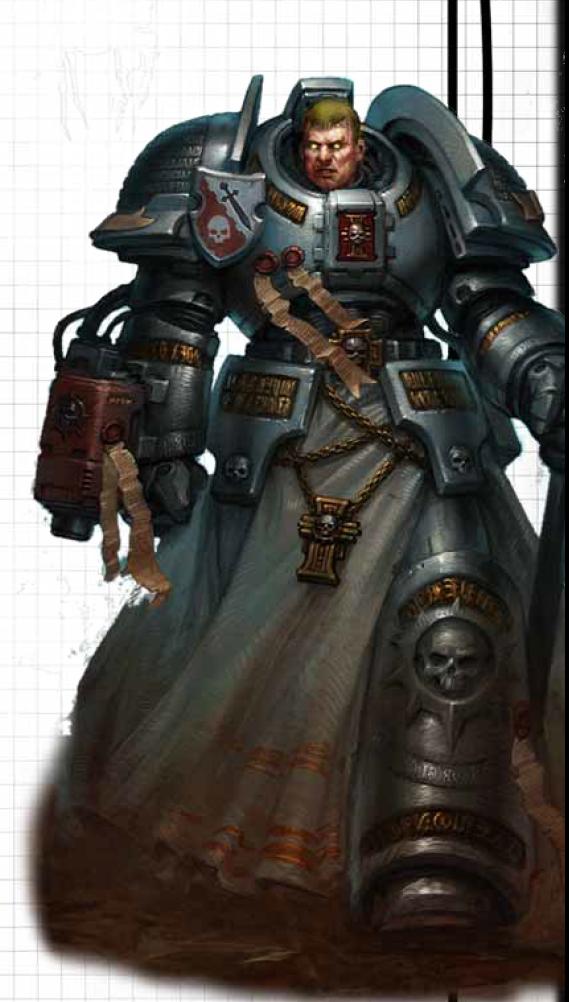
These guys exist to serve the blessed pantheon, nevermind that making a Vectron worshiping one an oddity. These guys are ridiculously tall, and supernaturally beautiful. They usually have some hint of other worldliness to them, such as glowing eyes, or silvery hair. Their backstory involves them being descended from humans who escaped their crystal sphere and somehow made it across the astral sea. The book notes that they don't reproduce, they pick from the best of other races and induct them into being an Aasimar. Aasimar are typically stoic, and lack a social life. They have a culture of religion and servitude, many of them focusing all of their time to becoming better able to pursue their duties to the Blessed Pantheon.
Tim, being an Aasimar, knows Trade and Celestial for his free languages. He can get a +1 to either wisdom or Constitution. He decides to bump his con up to 2, so he can take more hits. He also gains a +1 to both command and ballistics. He has a size of 5, making him a huge motherfucker, and the Aasimar power of "And they shall no know fear" gives him the feats Jaded and Fearless for free. I'll cover those feats when I get to the chapter on feats.
Aasimar, despite their racial background or even gender, all look extremely similar. Dwarven aasimar might have a hint of a beard, or Elven aasimar might have slightly pointed ears, but the creation process turns them all into the light-skinned, light-haired ubermensch we all know and love. They can live for a ridiculously long time, and the creation process returns them to adults, but most Aasimar die in battle, and prefer it that way. Aasimar respect tradition, despite most Aasimar finding their beliefs by just grabbing onto what's nearby after they're created, losing their memories. The vast majority of Aasimar follow the Blessed Pantheon, being exposed to it early and often, given the fact that they're created by said pantheon. Their are Aasimar who follow other deities, even the Ruinous Powers, but they are often exiled or executed. Aasimar who do well and live a long time are frequently given younger aasimars as followers, and many aasimar seek to become generals. Despite both being warrior-monks bred for battle, Aasimar and Tieflings don't get along for the obvious reasons. Aasimar are pretty neutral to everyone else.
Looking through the sample Aasimar NPCs, we've got Jacov, an Aasimar Paragon Paladin of Pelor who seeks to end the Blood War, even through -GASP!- peace. Brother Boromos is a Chosen of Sigmar, and a high ranking member of the White Templars. He fights the Blood War less because he hates Chaos, and more because he likes violence and showing off. Finally, we have Rhea, an aasimar follower of the Ruinous Powers, who believes she was reeducated against her will. She is a vampire, and works as an assassin, freeing people from tyrants.
Onto the Dark Eldarin. Or rather, we would be up to them, if I weren't going to skip ahead and cover the regular Eldarin first, because who need alphabetical order.
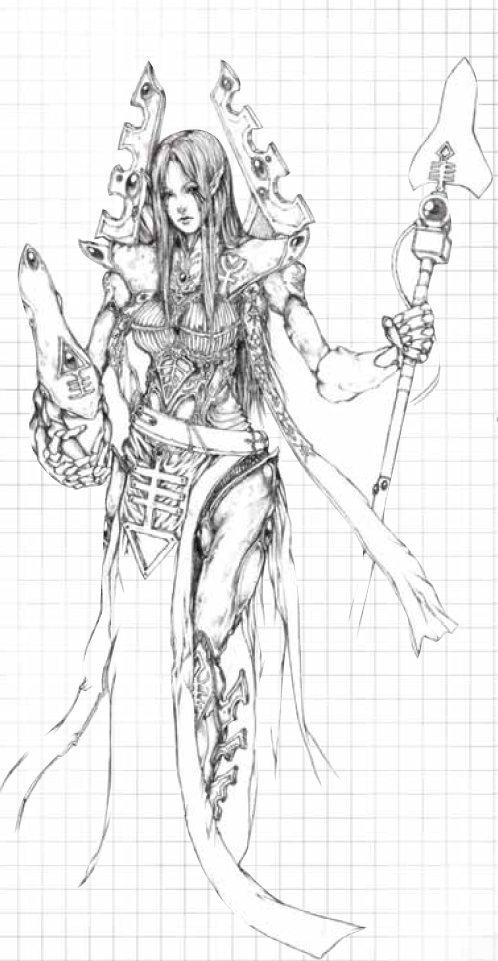
The Eldarin were created as a warrior race to serve the ancient Syrne in their war. The Syrne ended up losing, and the Eldarin were left stranded in various crystal spheres, not able to call anywhere home. So they decided to build giant worldships and bum around the Astral Sea. The positive to this is that they have the technical know how to open all the abandoned portal relays. Eldarin often use the name of their worldship as their second name. As a people, they are careful and conservative, struggling not to disturb anything, lest the balance of their artificial environments go kablooie. Young Eldarin go on pilgrimages, either returning with something of worth, or dying and controlling the population. As their racial power, Eldarin can teleport once a scene.
Eldarin are willowy, beautiful, and pale, or at least they would be if they were spotted without their voidsuits. Eldarin are skilled with magic, and have a strong connection to the warp. Because of this, Daemons frequently attempt to take their souls, and near death, many choose to trap their souls in phylacteries called soul stones. Eldarin do not believe in an afterlife and are only tokenly religious. They have weak immune systems, and avoid manual labor or dirty jobs as a rule. Eldarin hate the Dark Eldarin, and pity Elves.
Our sample NPCs include Talieer, who is exactly who you think she is, or for those not well-versed in Mass Effect, she's on her pilgrimage when she hooks up with a ragtag bunch of Bioware characters. After a mission to Carceri, she broke down in some Syrneth ruins and begins having strange flashbacks. Mecheldr is a Promethean, crafted using all the resources of his worldship and the soulstone of one of their greatest leaders. He serves as a guardian to the ship that created him, but is considering venturing further into the great wheel. Rounding out this trio is Giorna, a Daemonhost who uses the habit of wearing voidsuits to disguise her condition. She plans on leaving her worldship soon, to find more interesting food.
Let's go back to the Dark Eldarin now.
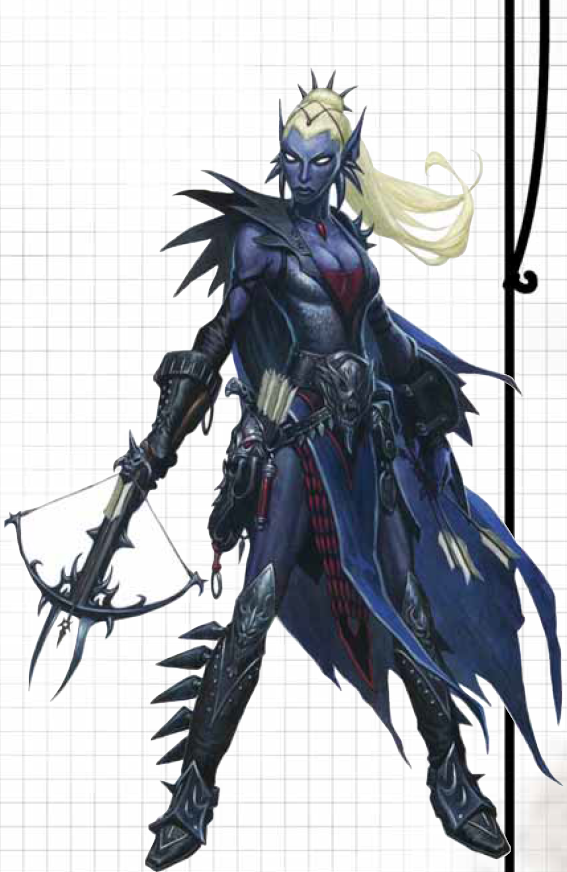
Now, instead of building worldships and relaxing, these guys signed on with Lolth to protect themselves from the Syrneth fall. They look like Eldarin, but with white hair and blackface. They tend to dress like dominatrixes. Their base of operations is the city of Commoragh inside the warp, where they occasionally strike out from as pirates. There is a hunger for ever greater emotional highs that plagues the race as a whole. They can create spheres of darkness as their racial power.
Dark Eldarin can stay effectively immortal and young forever provided the constantly bring souls and slaves to Lolth. In a stunning twist, Dark Eldarin can actually break their color scheme, with a few even having the pale skin and black hair of standard Eldarin. Dark Eldarin are extremely cruel, and just take what they want. Their culture is matriarchal, because whoever made Drow had a lot of fetishes. Their society functions as social darwinism at it's strongest, with the strong surviving and the weak just becoming more of the culture's many slaves. They want all the treasure. All of it! Book's words, there, but some of you might appreciate it. Dark Eldarin can only feel hate and pity, and really fucked up pulls for dominance is what passes for love with them.
Iniga Angband is a Vampire, skilled with magic. She left behind her family, but keeps contact in case anyone dies and she needs to take over. She tries to maneuver herself to the top of any social group she's in. Talorga is a chosen of the Raven Queen, and a mercenary who is always for sale. He's rumored to be on the run from the affections of one of Lolth's top lieutenants. Mael Dannan is a sorcerer, whose powers are amplified by being a Daemonhost. She was cruel enough before being taken that she managed to maintain almost her complete sense of self and personality.
Moving right along, let's look at the Dragonborn, whose art actually includes a signature!
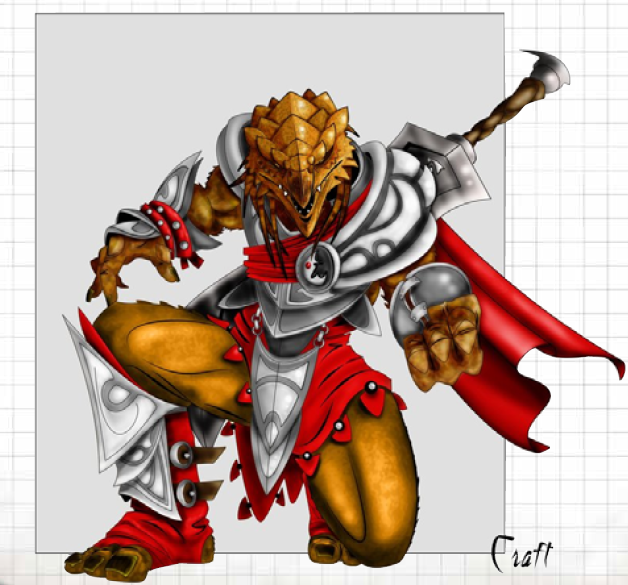
The dragons once ruled the astral sea, forging an empire out of what the Syrneth left behind. The Dragonborn served as their soldiers, with their ultimate origins being lost. Eventually, a dragon warlord known as Tiamat rebelled from within, battling Bahamut on Mt. Celestia, and destroying the dragon empire. These days, Dragonborn are pretty samurai-ish, traveling around and challenging people to one on one combat until their defeated. They then seek an aprenticeship with the warrior who defeated them. Their racial power gives them a breath weapon.
Brightly colored Dragonborn are a rarity, with most of the families having interbred into muddy, rusty scales. Dragonborn physically mature faster than humans, but live for about the same time. Nothing matters more than honor, and any promise or contract made must be carried out. Dragonborn who have failed to uphold their honor often become wild and restless, charging around trying to find something to fill the void, sometimes just rushing to a swift death. Many of the other races think of the Dragonborn as vain, latching onto their past accomplishments, but Dragonborn make it a point to respect everyone's accomplishments.
Jim is an Atlantean, who serves as an enforcer in a criminal syndicate, the principal family of which has died out. He has lost interest in the job, but hopes the rumors that one of his employers is still alive and returning. Mudrensh was born under auspicious signs, and has those bright scales I was talking about earlier. Many believe he's wasting his potential, all he does is pick fights and make things up. He fights unorthodoxly, and was recently acquitted for piracy. Fuu is a young, naive werewolf, who doesn't understand her powers. She is desperately looking for her father to explain things to her.
And, for the last race I'll do today, Elves!
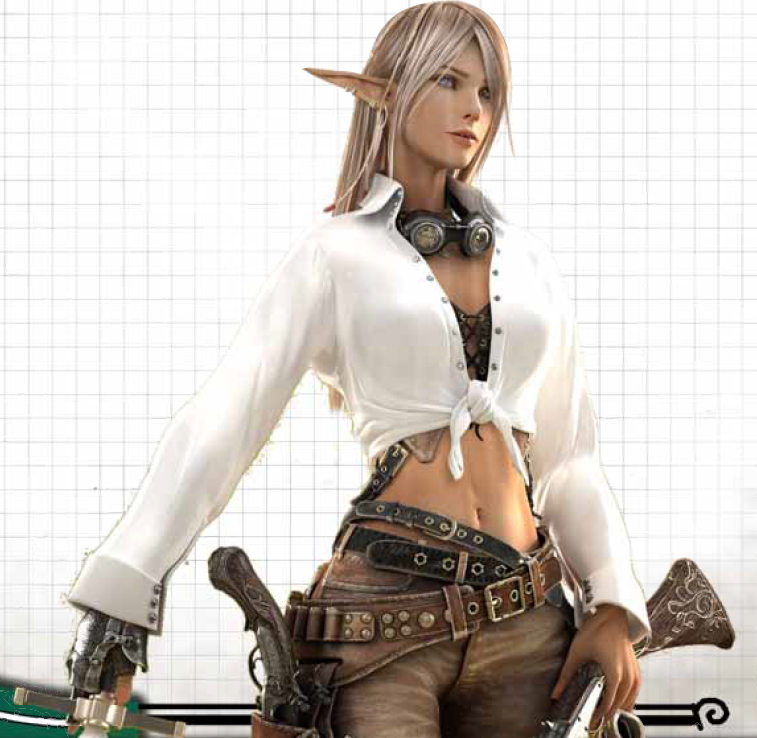
Elves are the last part of the Eldarin trinity, them being the ones that decided to just stay on the Crystal Spheres instead of flying away or selling their souls. They live simple, primitive lives, respecting nature and preserving the old ways. They are quite skilled with accuracy, and their racial power lets them reroll weaponry and ballistics tests, sometimes.
Now, one thing I didn't really mention during the Eldarin, is that Elves and the races like them live a long time, but mature about as fast as humans. I really like that, and it prevents 'being in diapers until their teens' or 'spending a century to get their first level' that elves in other games have. I also like their basic language being called Trade instead of Common, but that's neither here nor there. Anyway, elves. These elves are actually pretty rad, actually putting in hard work for what they have, and not being so serious all the time like in some games. Elves actually are really passionate, and prone to grand displays of emotion, which can have problems, but makes them fun at parties. They still have the respect for the natural world thing, and refuse to cut living trees, but their way better than the way Elves are written in a lot of fantasy.
Avourel is an Atlantean mage who specializes in fire magic. He's from a dessert land, and hunts down a vampire that took over his homeland. Jhean Lunos is a werewolf, born and raised, albeit a late bloomer. Despite his early troubles, he has a powerful connection to the Umbra, and is a master of transmutation. He is a skilled negotiator, but hot-blooded and prone to violence when things don't go his way. Finally, Reeva is a chosen of Corellon. He is a skilled leader, and the elves consider him something of a Messiah. Unfortunately, he has some kind of wasting disease, which the populace doesn't know about. It's powerful enough to kill even an Exalt, and Reeva seeks to do all the good he can do while he still has time to live.
Well, this is a long chapter, and I need to go eat, so I'll finish up the rest of it later. I tend to get tired of elves, anyway, so it's good I got done with all of them today.